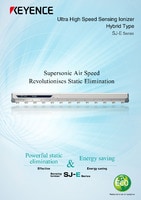
Energy-Saving High-Speed Sensing Ionizer
SJ-E series
Energy-Saving High-Speed Sensing Ionizer SJ-E series
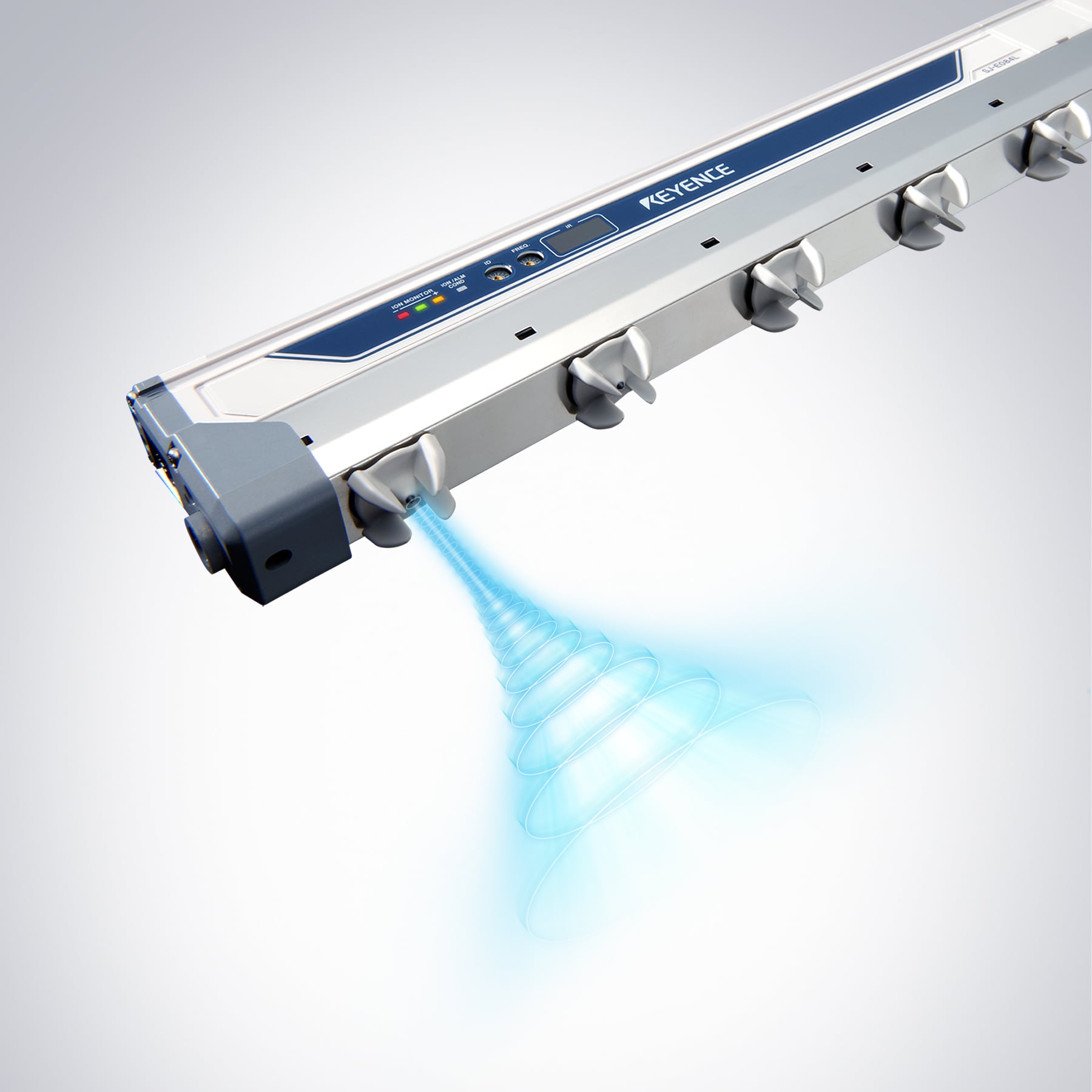
Optimum static elimination and energy-saving capabilities
Fast static elimination, easy maintenance, and reduced air consumption
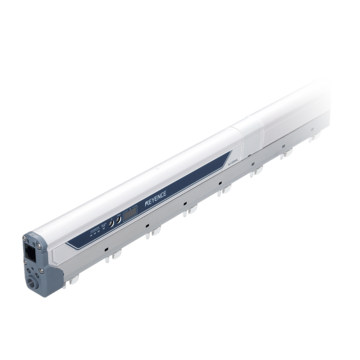
The Energy-Saving High-Speed Sensing Ionizer SJ-E Series saves energy while still providing high-speed static elimination. The supersonic air flow and structural optimization of electrode positions successfully reduce air consumption by 60% compared to conventional models. The result is static elimination with minimal running costs, a necessity amid rising electricity costs and the trend toward SDGs. Furthermore, the utilized supersonic structure reduces the adherence of foreign particles to static elimination probe tips, minimizing the need for maintenance even though a low volume of air is used.
Features
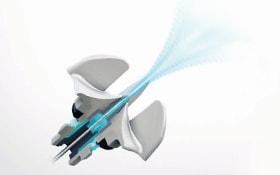
The three technologies that support our ability to provide optimum static elimination with the lowest air volume in the world
By using the first supersonic structure ever developed in the history of ionizers, KEYENCE has increased the speed of ions past the speed of sound, which makes the fastest static elimination in the world possible with an extremely low air volume.
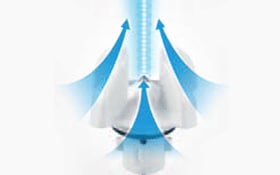
Optimum Static Elimination & Energy Saving
We have used de Laval nozzles, which are used in supersonic jet engine technology, in the electrode probes to realise our supersonic structure. The air speed exceeds the speed of sound, which enabled us to rapidly improve the speed at which ions attach to the target. In addition, the shape of the electrode probes, which makes use of fluid mechanics, pulls in the surrounding air to increase the air volume. These two technologies are what enable static elimination at high speeds and over a wide range with the lowest air volume in the world.

The Highly Functional Remote Control Makes the Status of the Ionizer Visible
We have recently developed a highly functional remote control that enables bidirectional communication with our ionizers. This remote control provides you with the static elimination status and alarm information in the palm of your hand. What's more, it enables you to easily configure operation settings such as detailed ionizer adjustments and electrostatic charge monitor sensitivity settings.

